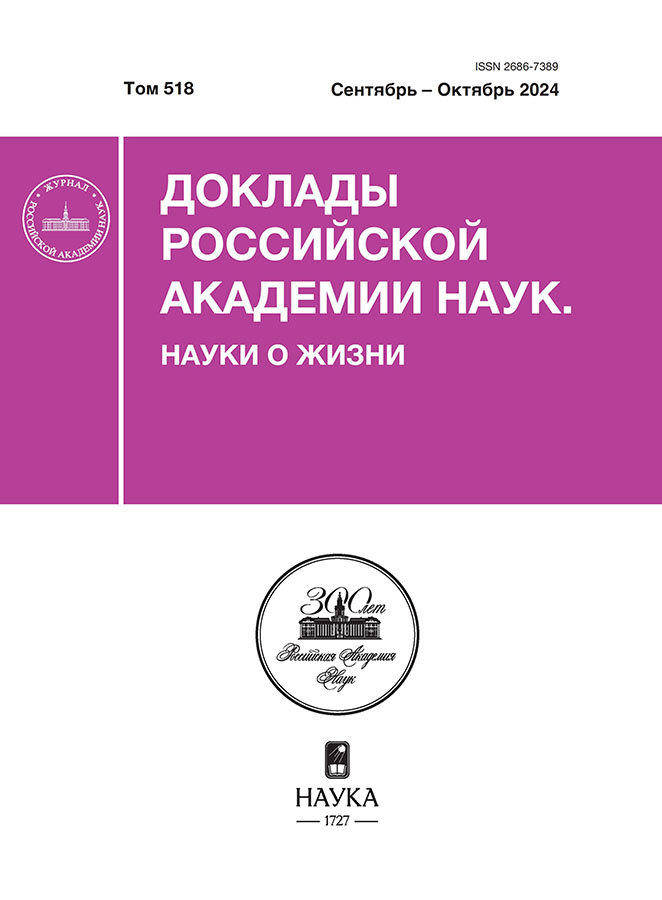Pharmacological Modulation of Cognitivr Test Solution in Mice of Two Genotypes
- Autores: Perepelkina O.V.1, Poletaeva I.I.1
-
Afiliações:
- Lomonossov Moscow State University
- Edição: Volume 518, Nº 1 (2024)
- Páginas: 93-95
- Seção: Articles
- URL: https://ruspoj.com/2686-7389/article/view/651405
- DOI: https://doi.org/10.31857/S2686738924050169
- ID: 651405
Citar
Texto integral
Resumo
Mice of two strains selected for successful solution of “object permanence” test and for lack of such solution demonstrated the differential reaction to injections of two drugs. The injections of atomoxetine. which blocks the noradrenaline reuptake, and of ‘non-benzodiazepine” anxiolytic afobazol was different. The success of solutions increased in mice selected for this test “non-solution”: and decreased or was inefficient in mice, selected for successful solution of object permanence cognitive test.
Palavras-chave
Texto integral
Sobre autores
O. Perepelkina
Lomonossov Moscow State University
Autor responsável pela correspondência
Email: ingapoletaeva@mail.ru
Rússia, Moscow
I. Poletaeva
Lomonossov Moscow State University
Email: ingapoletaeva@mail.ru
Rússia, Moscow
Bibliografia
- Полетаева И.И., Перепелкина О.В., Зорина З.А. // Биофизика. 2023. Т. 68, № 5, С. 1046–1056.
- Galsworthy M.J., Paya-Cano J. L., Liu L., et al. // Behav. Genet. 2005. V. 35, № 5. P. 675-692
- Cuevas J., Rodriguez A., Behensky A., et al. // J Pharmacol Exp Ther 2011. V. 339. P. 161–172.
- Уянаев А.А., Фисенко В.П. Хитров Т.К. // Бюлл. эксп. Биол. мед. 2003. Т.136. №2. 162–164.
- Baria A., Xua S., Pignatelli M. et al. // PNAS. 2020. V. 117. №46. P. 29080–29089
- Ptukha M., Fesenko Z., Belskaya A., et al. // Biomolecules 2022, 12, 1484.
- Perepelkina O.V., Poletaeva I.I. // Neurol. Int. 2023. V. 15. № 2. P. 649-660;
- Chloe S. Chernoff C.S., Hynes T.J., et al. // Psychopharmac. 2024. V. 241. P.767–783.
- Ptukha M., Fesenko Z., Belskaya A., et al. // Biomolecules 2022, 12, 1484.
- Cain R.E., Wasserman M.C., Waterhouse B.D., McGaughy J.A. // Dev Cogn Neurosci. 2011. V. 1.№ 4. P. 552–559.
- Salomons A. R., Arndt S.S., Ohl F. // J. Behav. Brain Sci. 2013. №3. P. 210-216
- Калинина Т.С., Шимширт А.А., Волкова А.В., и др. // Эксп. клин. фармак. 2016. Т. 79. № 10. С. 3–7.
- Robinson E.D.J. // Psychopharm. 2012. V. 219. P. 303–312.
- Robbins T.W. // Br J Pharmacol. 2017. V. 174. № 19. P. 3191–3199
Arquivos suplementares











